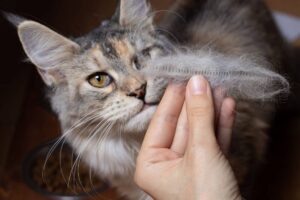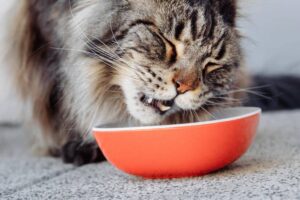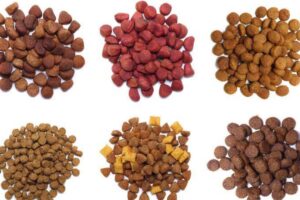How to Mix Dry and Wet Cat Food For Kittens
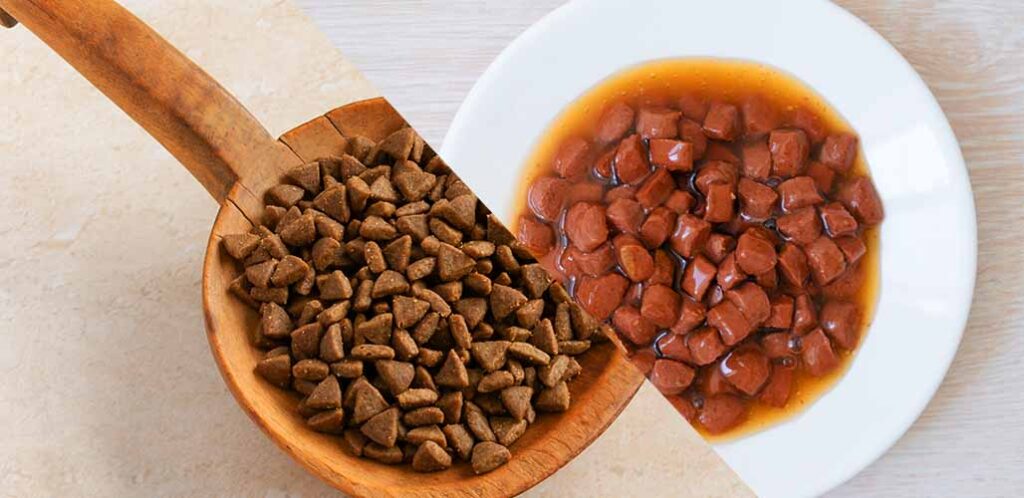
Bringing a new kitten into your home is a delightful experience, and ensuring their well-being involves making thoughtful choices, especially when it comes to their diet. As responsible cat owners seek ways to provide comprehensive nutrition, they prefer to mix dry and wet cat food for kittens.
Mixing dry and wet cat food for kittens presents a number of advantages for growing cats. Therefore it is first important to understand the vital components of a kitten’s diet, including proteins, fats, vitamins, and minerals, that form the basis for crafting a nourishing meal plan. Using this you can mix dry and wet cat food to prepare a quality and nutritious meal for your kitten.
Can You Mix Wet and Dry Food for Kittens?
Absolutely! Mixing wet and dry food for kittens is incredibly beneficial. This feeding approach provides a balanced and versatile diet for your furry friend. Wet cat food, with its higher moisture content, aids in maintaining optimal hydration levels—a crucial factor, especially for kittens prone to dehydration. This not only supports their overall health but also contributes to kidney function and urinary tract health.
In addition to the hydration benefits, incorporating dry cat food into the mix offers advantages for dental health. The act of chewing dry kibble helps promote oral hygiene by reducing plaque and tartar buildup. Beyond the physiological benefits, the combination of wet and dry cat food introduces a variety of textures and flavors to your kitten’s diet. This diversity not only keeps mealtime interesting for your curious feline but also helps address potential finicky eating habits, ensuring they receive a well-rounded and enjoyable nutritional experience.
So, if you’re considering mixing wet and dry food for your kitten, rest assured that you’re providing them with a nutritious and appealing diet that caters to their unique needs.
Advantages of Mixing Dry and Wet Cat Food
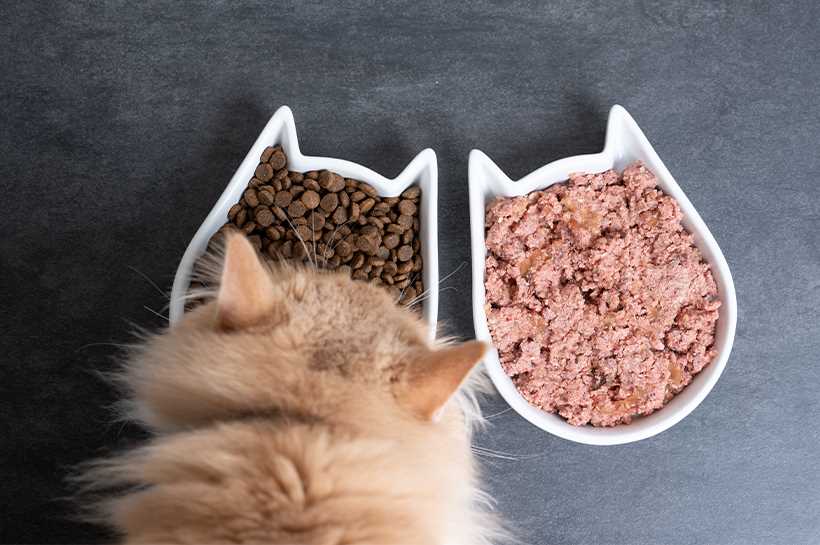
The art of blending dry and wet cat food encompasses several advantages, creating a nutritional synergy that addresses the diverse needs of our feline companions.
- Enhanced Hydration: The inclusion of wet cat food, renowned for its higher moisture content, complements the dry kibble to promote optimal hydration. This proves especially vital for kittens susceptible to dehydration, contributing to improved kidney function and urinary tract health.
- Variety in Texture and Taste: The amalgamation of dry and wet cat food introduces a rich tapestry of textures and flavors to your cat’s dining experience. This culinary diversity not only adds excitement to mealtime but also fosters a more balanced and enjoyable eating routine, appealing to the discerning palates of even the most selective feline companions.
- Addressing Potential Shortcomings: Recognizing that each type of cat food has its distinct advantages, the combination of wet and dry options mitigates potential shortcomings. This ensures that your cat benefits from a comprehensive nutritional profile, encompassing a broad spectrum of essential nutrients crucial for their overall health and well-being.
- Digestive Health Support: The mix of wet and dry cat food contributes to digestive health. The moisture in wet food aids in digestion, preventing potential issues such as constipation, while the crunchiness of dry kibble can assist in dental health and jaw strength.
- Weight Management and Satiety: The combination of wet and dry food can contribute to weight management. Wet food, with its lower calorie density, helps control portions, while the satisfying crunch of dry kibble provides a sense of satiety, reducing the likelihood of overeating. This dynamic helps maintain an optimal weight for your feline friend.
Choosing the Right Products
Choosing the Right Products
Selecting the right cat food is paramount in ensuring your kitten receives the nutrition essential for their growth and well-being. Begin by opting for high-quality cat food brands known for prioritizing premium ingredients and nutritional integrity. Scrutinize the ingredient lists and nutritional information to guarantee a balanced combination of proteins, fats, vitamins, and minerals.
Understanding how to interpret cat food labels empowers cat owners to make informed decisions tailored to their kitten’s specific needs. Consider any dietary restrictions or preferences your kitten may have, and consult with a veterinarian if necessary. The journey of choosing the right products is foundational to providing a diet that supports your kitten’s unique nutritional requirements, setting the stage for a healthy and happy life.
Ideal Wet And Dry Cat Food Ratio
Determining the right mixing ratio for combining dry and wet cat food is crucial to providing a balanced diet tailored to your kitten’s needs.
A common starting point is a 70:30 ratio, where 70% consists of dry kibble and 30% is wet cat food. This proportion provides a good balance of texture and moisture, promoting optimal hydration and dental health.
However, individual preferences and dietary requirements may vary. For kittens with a preference for wet food or those requiring additional hydration, adjusting the ratio to 50:50 can be beneficial. Alternatively, for kittens who lean towards dry food, a ratio of 80:20 may suit their palate.
Monitoring your kitten’s weight, behavior, and overall health is essential in fine-tuning the mixing ratio. Gradual adjustments, such as 5% increments, allow you to observe their response and customize their diet for a well-rounded nutritional experience.
Mixing Techniques
When combining dry and wet cat food for your kitten, employing effective mixing techniques ensures a seamless blend that caters to their taste preferences.
Begin by measuring the appropriate proportions of each type of food based on your chosen mixing ratio. Thoroughly combine the dry kibble and wet food to ensure an even distribution of flavors and textures. Consider using a fork or spoon to break apart any clumps and mix the components thoroughly.
Experiment with different mixing methods to find what works best for your kitten—whether it’s a uniform mixture or layering one over the other. Ensuring the even distribution of both dry and wet components is key to preventing selective eating and ensuring your kitten receives a balanced nutritional intake with each bite.
By following these mixing techniques, you’ll create a palatable and nutritionally rich meal that your kitten will eagerly look forward to at every feeding.
Monitoring Kitten’s Health and Adjusting the Diet
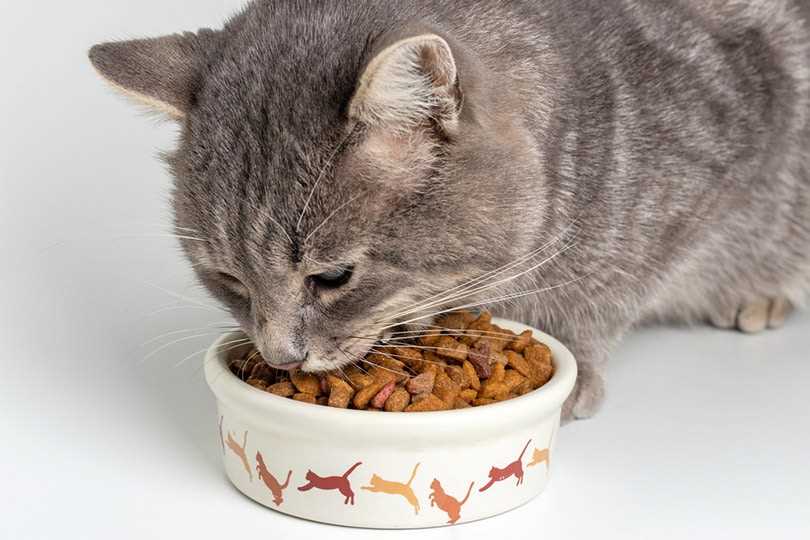
Vigilant observation of your kitten’s health is paramount in tailoring their diet for optimal well-being. Regularly assess key indicators such as behavior, weight, and overall vitality. Any noticeable changes could signify the need for adjustments in their diet. Consistent consultations with a veterinarian provide valuable insights into your kitten’s unique requirements.
Consider factors such as age, weight, and any health concerns when adapting their diet. Responsiveness is key—whether it’s adjusting the mixing ratio to accommodate growth or transitioning to specialized diets for specific health needs.
This proactive approach ensures that your kitten’s nutritional intake aligns with their evolving requirements, fostering a healthy, thriving companion. Regular veterinary check-ups serve as a compass, guiding you in refining their diet to perfection and contributing to a lifetime of well-being for your feline friend.
Common Mistakes to Avoid
Here are some common mistakes that pet owners make when they first try to mix dry and wet cat food for kittens:
- Overfeeding or Underfeeding: Striking the right balance in portion control is crucial. Overfeeding may lead to obesity, while underfeeding can result in malnutrition. Regularly assess your kitten’s body condition to ensure they maintain a healthy weight.
- Ignoring Individual Needs: Each kitten is unique, and their nutritional requirements may vary. Pay attention to their preferences, activity levels, and any specific health conditions, adjusting their diet accordingly.
- Abrupt Dietary Changes: Sudden shifts in diet can disrupt your kitten’s digestion, leading to gastrointestinal issues. Gradual transitions, especially when introducing mixed food, help prevent digestive upsets and ensure a smooth adjustment.
- Disregarding Weight and Age Factors: Weight and age play pivotal roles in a kitten’s nutritional needs. Failing to consider these factors when adjusting the diet may result in an imbalance. Regularly monitor and adjust portions based on age and weight fluctuations.
- Storage Management: Properly store unopened/opened food to prevent it from spoiling, and ensure long life (for both your food and your cat)
Conclusion
In conclusion, mixing dry and wet cat food is a practical approach to providing a well-rounded and nutritionally balanced diet for kittens. By understanding their unique nutritional needs, choosing high-quality products, establishing the right mixing ratio, and monitoring their health, cat owners can ensure their kittens thrive and grow into healthy, happy cats.
Related Articles
Here are some more articles you can read to help you better understand dry and wet cat food:
